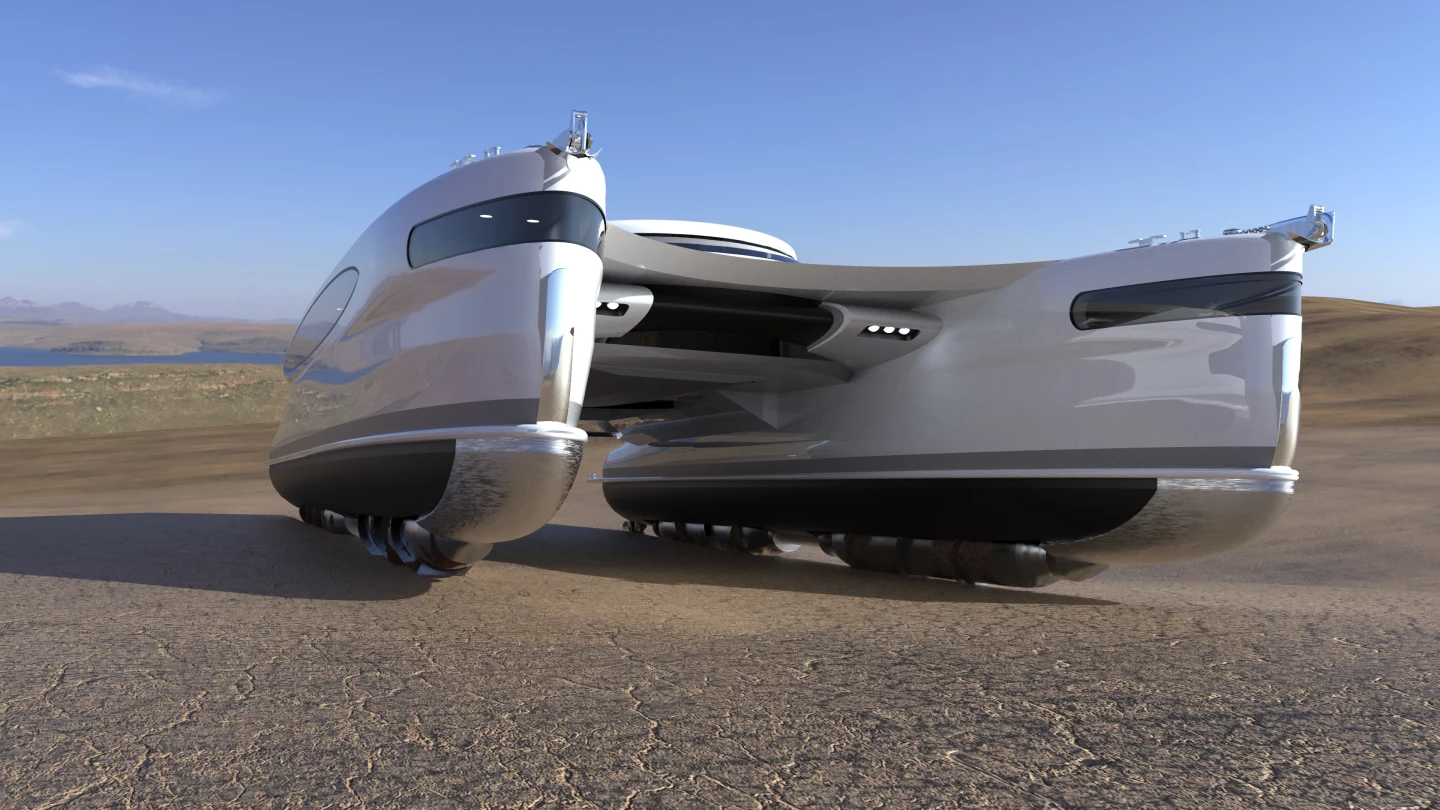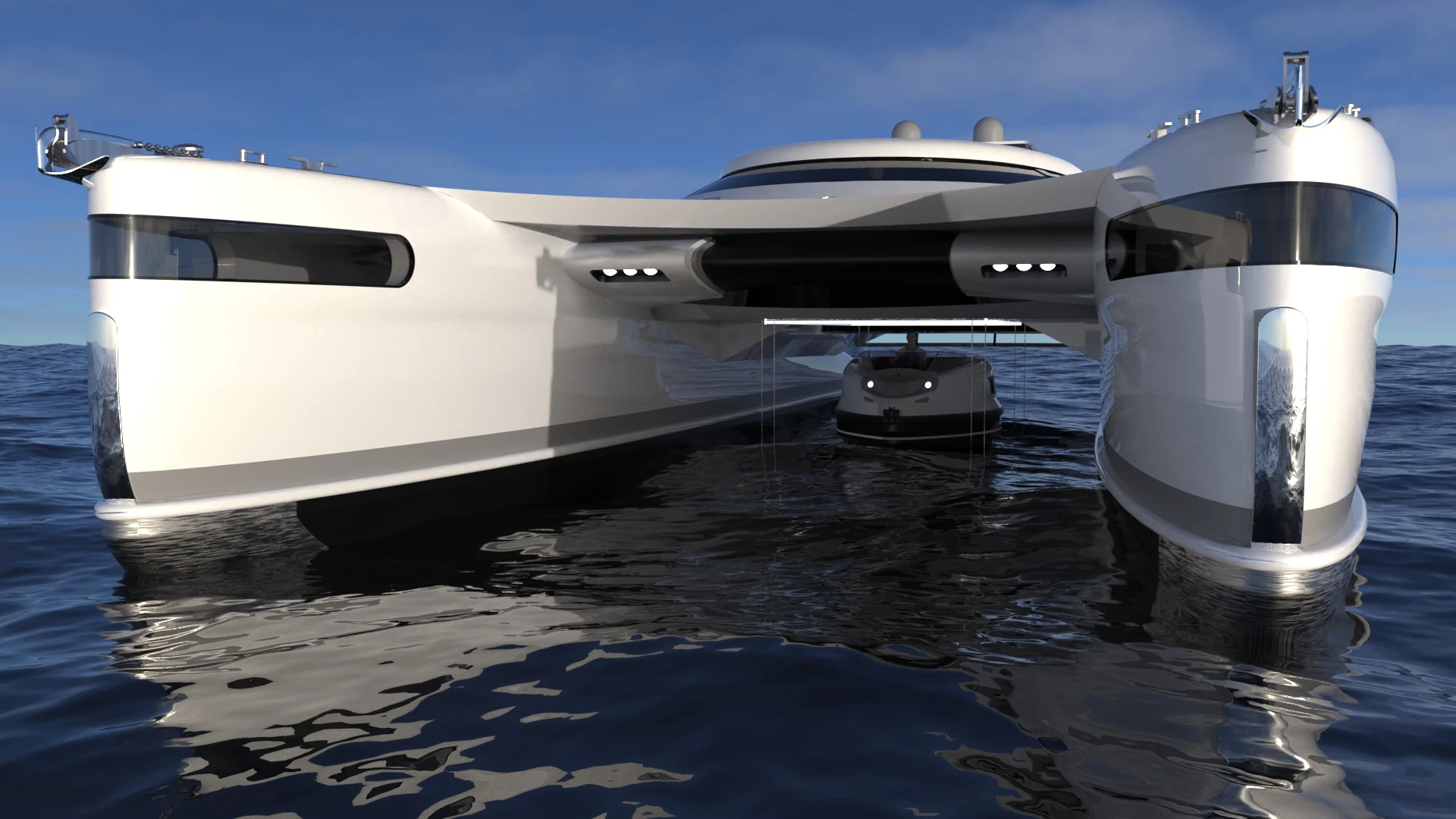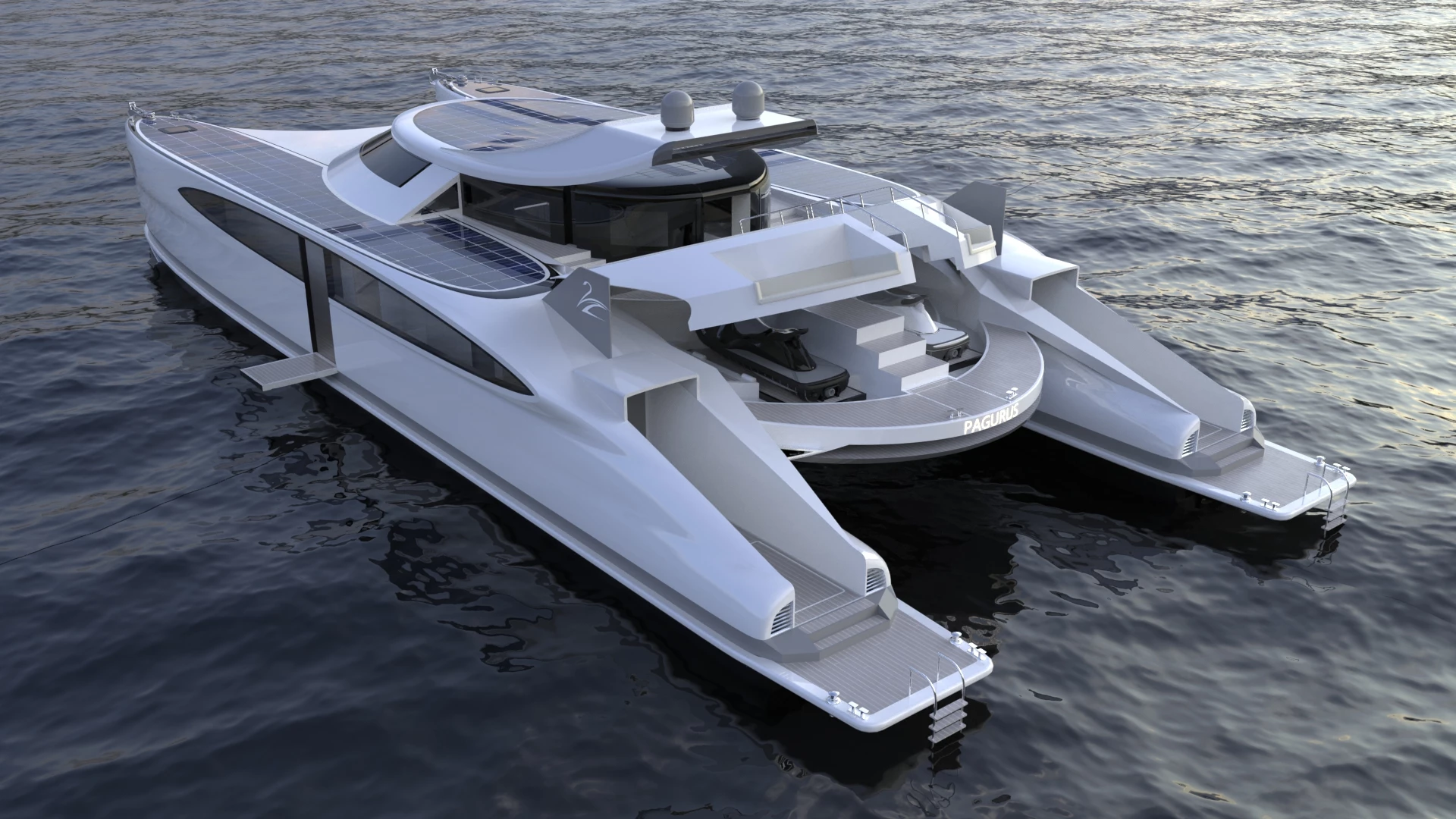Renowned Italian yacht design firm Lazzarini has unveiled designs for a solar-powered amphibious "crabmaran," and according to the studio, it will be the first in the world. Dubbed Pagurus, the striking 82-ft (25-m) superyacht merges solar technology with innovative design. Originally conceived for military use, this unique vessel is now being offered to the private sector, with a staggering €24,000,000 (US$29,134,800) price tag.
The term crabmaran originated from the firm’s first brainstorming session by combining the words "crab" and "catamaran."
"We decided later to call it Pagurus: the Latin word for crab," Lazzarini design studio tells New Atlas. "Pagurus is our third project inspired by the crab, highlighted not only in its catamaran forms but also in its functions; the fact it can move on the sand just like the crab."
Pagurus can accommodate up to eight guests and four crew members, featuring three bedrooms plus a lounge, kitchen and bathroom facilities. The yacht is built with twin steel hulls, each of which can be configured to suit different interior design requests. Its living spaces are split across the two hulls, which are connected via a steel bridge and tower deck. The steel bridge is implemented to strengthen and reinforce the main body of the vessel.
Additionally, the central part of the yacht incorporates a crane platform connected to four electric winches. This feature allows for the loading and unloading of various items, including an off-road vehicle. It can also be transformed into an outdoor lounge or dining area.

Pagurus is equipped with a dual-propeller stern drive, coupled with twin 890-hp diesel engines, providing an estimated top speed of 24 knots (44 km/h or 28 mph). Twin steel screw cylinders are located in the immersed part of the hulls, featuring helical spiral flanges like the thread of a screw. Each screw measures 6.5 meters (21.3 ft) in the length, and 1.2 meters (3.9 ft) in diameter. These rotating cylinders are connected to a transfluid transmission and are able to generate energy to recharge the yacht’s batteries when cruising.
"The cylinders are are able to generate motion in water (5 knots) and simultaneously energy," explains Lazzarini.

The vessel is also designed to be fitted with solar panels across the yacht’s top surfaces and coupled with six 360 V batteries – each with the capacity of 40 kWh – providing an estimated six to seven hours at 4 knots (7 km/h or 5 mph) in full electric mode.
"We are also considering a sail version with some weight reduction improvements," says the studio. "At the moment, solar systems can guarantee good autonomy on extremely light vessels, however, to achieve good performance we need to have a higher tonnage and we are therefore still reliant on fuel powered engines. Nevertheless, engines available on the market today offer some interesting possibilities for hybridization; for every eight hours of diesel navigation, we can generate two hours of electric cruising."
When the Pagurus reaches land, the rotating cylinders are lowered down by approximately 60 cm (23.6 inches), thereby transforming the catamaran into an amphibious vehicle able to move across sand or mud at a maximum speed of 35 km (22 mph). While on land and in order to prevent damage to the hulls, the yacht features a steel shield protection bumper.
"Pagurus merges innovative automotive design with nautical design to create the very first amphibious catamaran in history," says Lazzarini. "We like the idea of being able to navigate and arrive in front of a beach, with the possibility to land ashore for the night."

Pagurus Specifications:
- Material: 69 percent forged steel, 31 percent painted carbon fiber
- Engines water mode: 2 x Caterpillar (890 hp each)
- Engines terrain mode: 4 x Yanmar diesel (440 hp each)
- Hybrid propulsion: transfluid transmission
- L.O.A: 25 meters (82 ft)
- Beam: 9.2 meters (30 ft)
- Height: 5.2 meters (16.5 ft)
- Draft/immersion: from 1,600 mm to 1,800 mm (screws out)
- Dry displacement: 52,000 kg (114,640 lb)
- Weight : 52,999 kg (116,842 lb)
- Cruising speed (water): 18 knots
- Max speed (water): 25 knots
- Cruising speed (terrain): 20 km/h (12.5 mph)
- Max speed (terrain): 35 km/h (22 mph)
- Electric motion max speed (water): 6 knots
- Electric motion max speed (terrain): 15 Km/h (9.3 mph)
- Fuel: diesel
- Fuel tank capacity: 8,000 l (2,113 gal)
- Water Capacity: 1,000 l (264 gal)
- Rooms: 5
- Passengers: 12
- Crew: 4
- Construction time: 24 months
- Location: Italy
Pagurus can be built on demand for a starting price of €6,580,000 (about US$7,987,791) for the carbon version with twin jet drive. The price jumps to €24,000,000 (US$29,134,800) for the amphibious Crabmaran version.
"Pagurus is the third in a series of seven important projects," adds Lazzarini. "We have also been working on a new top-secret project for four years that we will reveal early next year. Watch this space."
Source: Lazzarini Design Studio























